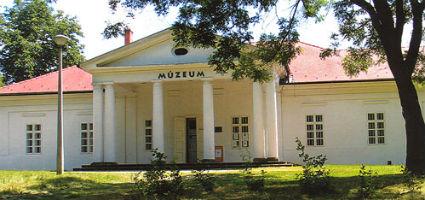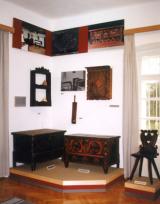2025. July 3. Thursday
Pál Kiss Museum - Tiszafüred
 |
Address: 5350, Tiszafüred Tariczky sétány 6.
Phone number: (59) 352-106
E-mail: kisspalmuz@gmail.com
Opening hours: Tue-Sat 9-12, 13-17
|
The Pál Kiss Museum is one of the oldest rural collection of Hungary. It was founded by Roman Catholic priest Endre Taricky in 1877. At the beginning the collection - named Archeologic Union of the Tisza Region - had about 400 items. The union welcomed all kinds of members, regardless of their religious or social status. It was financed by donations and membership fees up to the end of the 19th century. Calvinist teacher Béla Milesz and Endre Tariczky contributed much to the functioning of the union for more than three decades.
In 1896 three rooms were secured for the collection in the building of the local council just being built. When the collection became a museum and public library, its work was also supported by government and local finances. Béla Milesz and Endre Tariczky regarded archeology as their main activity. They undertoo regular excavation works, too.
Just like all museums of the time, they collected everything that was counted a rare or interesting item. That is how books from the 16th century, famous manuscripts, rare coins, a Roman piece of mosaic and paleontological finds were taken into the collection. They divided their collection into four different classes: coin collection, relics, mixed objects and a library.
The museum was most known for its archeologic collection. Its two founders were connected to the circulation of scientific life by their articles and lectures. From 1899 to their death of 1912 they annually announced the results of the union's work and activity in a published report. The life-size picture of Tariczky was painted in 1892-ben, and that of Milesz in 1912.
After their death the union was only functioning formally. Because of lack of skilled researchers, its excavation right was withrawn. Before the second world war the financial supports were also withrawn. The operation of the union was suspended. The collection of nearly 20 thousands items was partly destroyed in the battles of 1944. Its valuable items were scattered. The material that was left made up the exhibition arranged in 1949. It was opened as the first village museum of Hungary.
In 1952 the collection was placed in the Lipcsey mansion, where the museum took up the name Pál Kiss. Pál Kiss was one of the generals of the revolution of 1848-1849. After the defeat of the war of independence he settled down in Tiszafüreden. His grave is found in the cemetary of Örvényi street.
The memory of Béla Milesz and Endre Tariczky is kept by a number of relics, articles and books written by them. The path in front of the museum and the region historical foundation bear the name of Endre Tariczky.
Anikó Füvessy
In 1896 three rooms were secured for the collection in the building of the local council just being built. When the collection became a museum and public library, its work was also supported by government and local finances. Béla Milesz and Endre Tariczky regarded archeology as their main activity. They undertoo regular excavation works, too.
Just like all museums of the time, they collected everything that was counted a rare or interesting item. That is how books from the 16th century, famous manuscripts, rare coins, a Roman piece of mosaic and paleontological finds were taken into the collection. They divided their collection into four different classes: coin collection, relics, mixed objects and a library.
The museum was most known for its archeologic collection. Its two founders were connected to the circulation of scientific life by their articles and lectures. From 1899 to their death of 1912 they annually announced the results of the union's work and activity in a published report. The life-size picture of Tariczky was painted in 1892-ben, and that of Milesz in 1912.
After their death the union was only functioning formally. Because of lack of skilled researchers, its excavation right was withrawn. Before the second world war the financial supports were also withrawn. The operation of the union was suspended. The collection of nearly 20 thousands items was partly destroyed in the battles of 1944. Its valuable items were scattered. The material that was left made up the exhibition arranged in 1949. It was opened as the first village museum of Hungary.
In 1952 the collection was placed in the Lipcsey mansion, where the museum took up the name Pál Kiss. Pál Kiss was one of the generals of the revolution of 1848-1849. After the defeat of the war of independence he settled down in Tiszafüreden. His grave is found in the cemetary of Örvényi street.
The memory of Béla Milesz and Endre Tariczky is kept by a number of relics, articles and books written by them. The path in front of the museum and the region historical foundation bear the name of Endre Tariczky.
Anikó Füvessy
